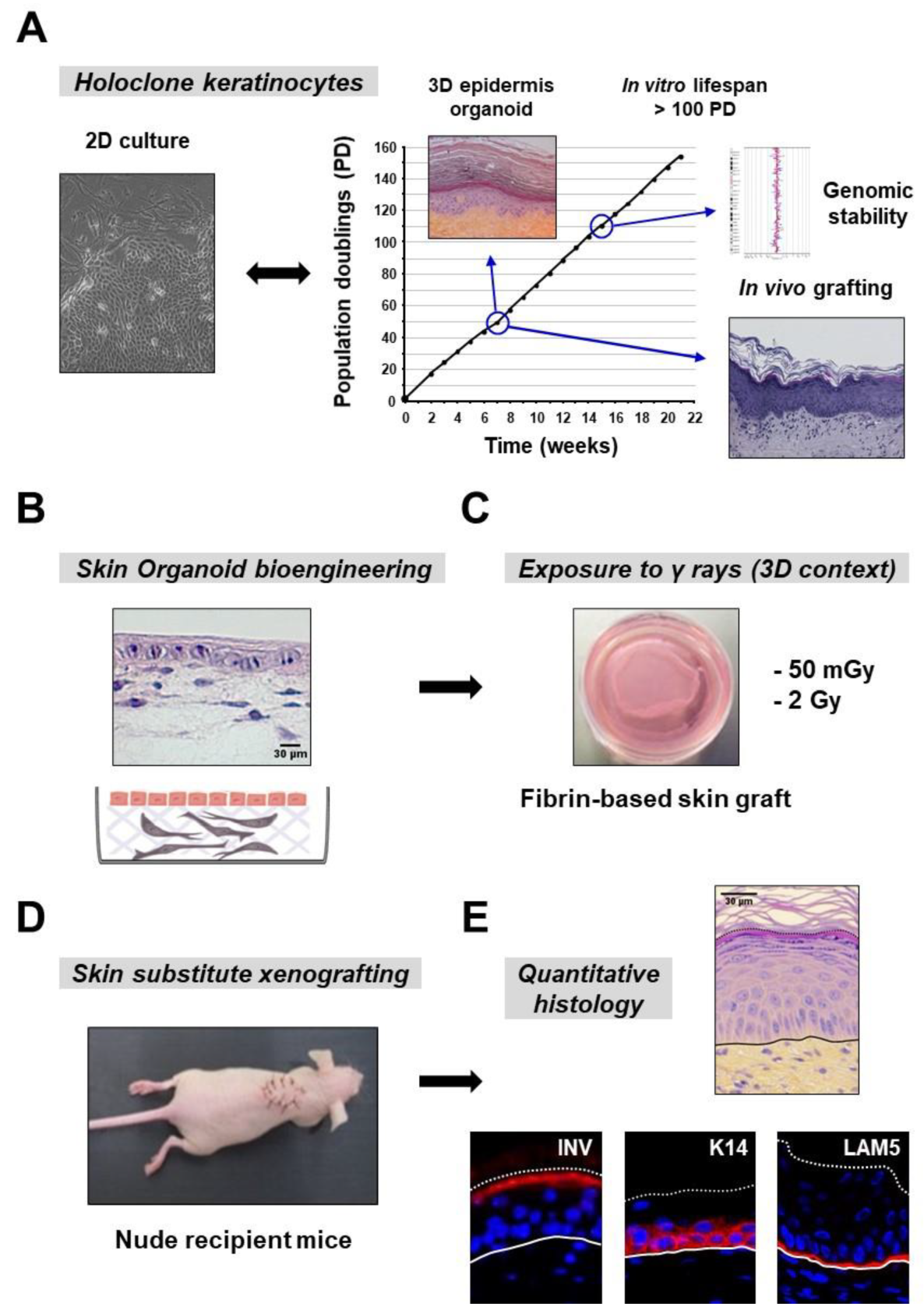The growing use of medical imaging is increasing human exposure to low-dose ionizing radiation, the consequences of which remain poorly documented. Researchers at the Genomics and Radiobiology of Keratinopoiesis Laboratory (LGRK) took a closer look at the impact of this source of stress on human skin stem cells. These latter ensure epidermal renewal throughout life, but they are also frequently involved in the development of skin carcinomas.
The development of human organoids, which are three-dimensional bioengineered organ models for research, has led to a better understanding of the processes regulating the development and physiology of certain organs and the ability to study these aspects in pathophysiological settings. In skin biology, these research models are used to study, for example, skin barrier disorders in atopic dermatitis, genetic skin diseases, or the regenerative potential of skin stem cells.
For their study published in Cells, the LGRK researchers created human skin organoids from skin stem and progenitor cells and transplanted them to immunodeficient mice to reproduce a context of in vivo skin regeneration. Before transplantation, the organoids were exposed to low-dose radiation, specifically a dose of 50 mGy, similar to that received in a CT scan. Quantitative imaging studies showed that this low radiation dose caused regeneration alterations and disturbed epidermal organization. The development of dysplastic zones was observed, particularly in the basal layer, in a manner similar to the dysplasia¹ observed in early-phase skin carcinoma.
The observed dysplastic zones were associated with a loss of basal cell polarity and the development of markers typical of epithelial-mesenchymal transition (EMT), such as expression of the EMT promoter ZEB1 and the mesenchymal marker α-SMA.
The results reported by the LGRK team suggest that low doses of ionizing radiation, although harmless for healthy epithelium, can be deleterious in regenerating epithelium.

© N. Fortunel et M. Martin / LGRK-IRCM
1: Epidermal dysplasia is characterized by the development of a zone in the epidermis showing defects in morphology, differentiation or organization.